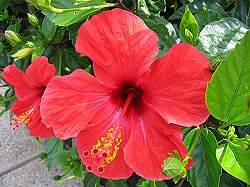
“It is widely believed that people are bad at naming odors. This has led researchers to suggest smell representations are simply not accessible to the language centers of the brain. But is this really so? Psychologist Asifa Majid from Radboud University Nijmegen and linguist Niclas Burenhult from Lund University Sweden find new evidence for smell language in the Malay Peninsula.”
(Radboud University Nijmegen. “Odors expressible in language, as long as you speak right language.” ScienceDaily. ScienceDaily, 3 January 2014. www.sciencedaily.com/releases/2014/01/140103085248.htm)
“In Jahai there are around a dozen different words to describe different qualities of smell. For example, ltpɨt is used to describe the smell of various flowers and ripe fruit, durian, perfume, soap, Aquilaria wood, bearcat, etc. Cŋɛs, another smell word, is used for the smell of petrol, smoke, bat droppings and bat caves, some species of millipede, root of wild ginger, etc. These terms refer to different odor qualities and are abstract, in the same way that blue and purple are abstract.”
(Read more from Asian Scientist Magazine at: https://www.asianscientist.com/2014/01/in-the-lab/odors-expressible-malay-hunter-gatherer-language-2014/)

Siehe auch:
http://www.sueddeutsche.de/wissen/olfaktorische-forschung-explosion-der-duefte-1.1918297

 Deutsch
Deutsch